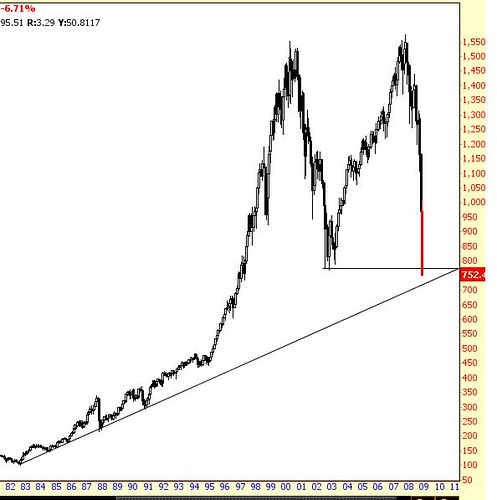Austrian economics and Austrian business cycle theory have regained a bit of popularity of late, given the recent turmoil in the financial markets. Understanding Austrian business cycle theory can help us understand where things are headed, so that we can invest accordingly.
What it is: Austrian business cycle theory basically posits that bubbles and busts result primarily from an overexpansion of credit. Credit is too cheap and too easy. Entrepreneurs are trained in finding market opportunities and inefficiencies in the market; and thus, the Austrian business cycle posits, entrepreneurs as a whole can only be collectively mislead for a sustained period if credit is excessively expanded. This will cause entrepreneurs to excessively invest in capital-intensive projects, like building houses.
The result: The result of this excessive expansion is that the market will eventually try to deflate and purge the misguided investments out of the market. This will result in deflation.
What government policy should be: According to Austrian business cycle theory, deflation is good, and government policy should be to embrace it -- not avoid it. Deflation will encourage "hoarding of cash," which is perhaps more accurately referred to as savings. These savings will then form the basis for the economy to heal itself and become strong again.
What happens if government intervenes: If government intervenes to prevent deflation, one of two things will happen: deflation will be prolonged and deepened, as we see in Japan; alternatively, if government goes into greater debt while its tax base diminishes, it runs the risk of being unable to find borrowers, at which point faith in the currency is lost and a run on the currency begins -- meaning everyone looks to sell the currency, causing its value to fall and prices to rise, as we saw in Argentina in 2001 and 2002.
Which brings us to where we are today.
So the key question: how much deflation? To answer that question, consider the chart below:

Note the uptrend that begins in 1995; this is the beginning of the tech bubble, which was brought about by excessive credit expansion under Greenspan's Fed. The market tried to deflate -- this was the "dot com apocalypse" from 2001-2003 -- but the Fed lowered rates again, preventing a full deflation, and instead pushing the bubble into the housing market. A full deflation would then push S&P back to the 1995 level of around 400. Alternatively, a run on the US dollar may cause the nominal price of stocks to rise, but it will fall respective to other currencies. A way to gauge whether the stock market is truly rising in value or if it is just a nominal gain resulting from currency weakness is to compare percentage gains in stocks to gains in gold. If stocks are rising faster than gold, it could be a sign of real growth.
According to Austrian business cycle theory, if money supply was not excesively expanded but was kept at appropriate levels, there would be no real bubbles or busts. This may make the stock market less fun.
 Conversely, it would lead to greater focus on profitability rather than financial ratios, and a corresponding focus on dividends rather than valuations.
Conversely, it would lead to greater focus on profitability rather than financial ratios, and a corresponding focus on dividends rather than valuations.Discuss This On InformedTrades
